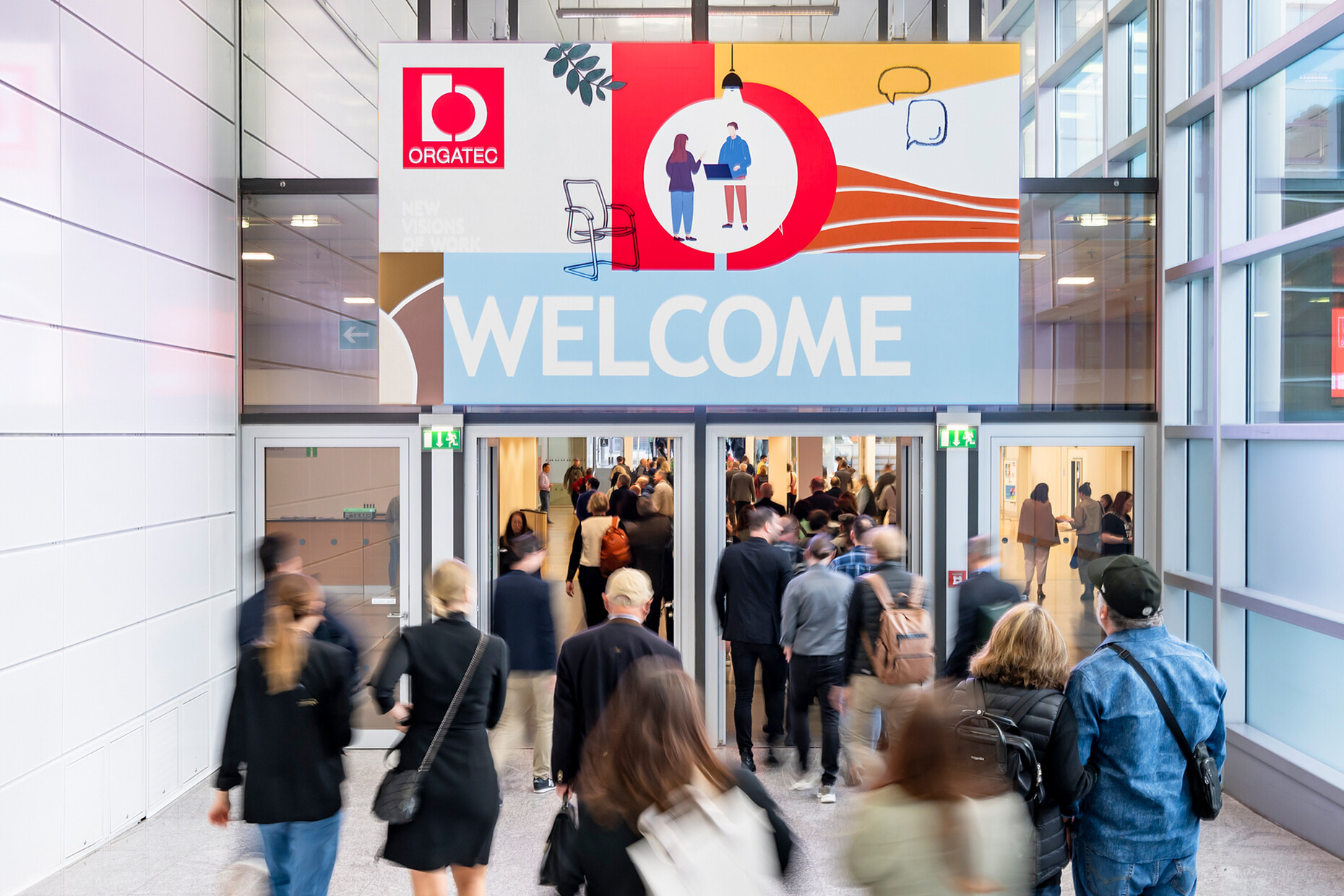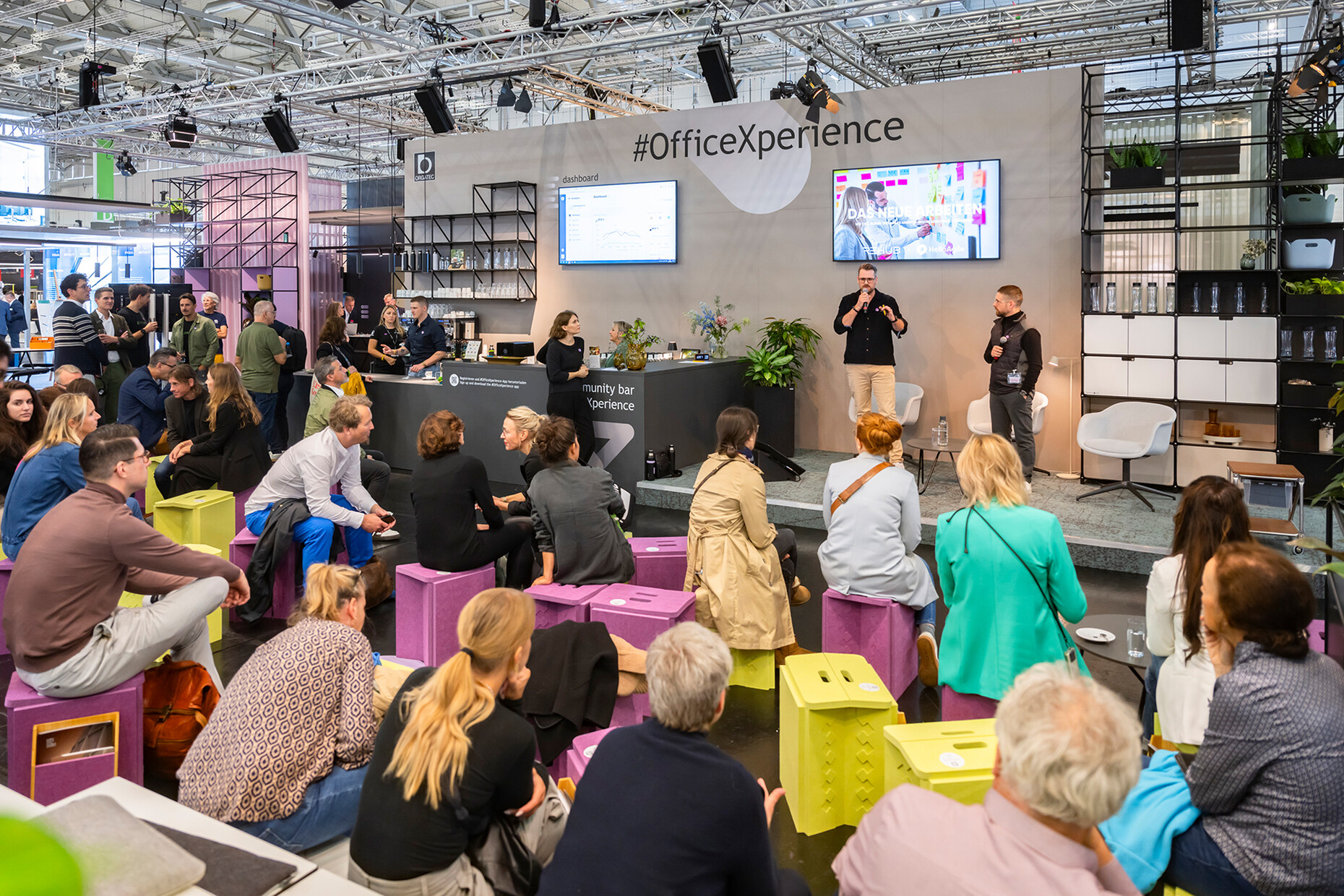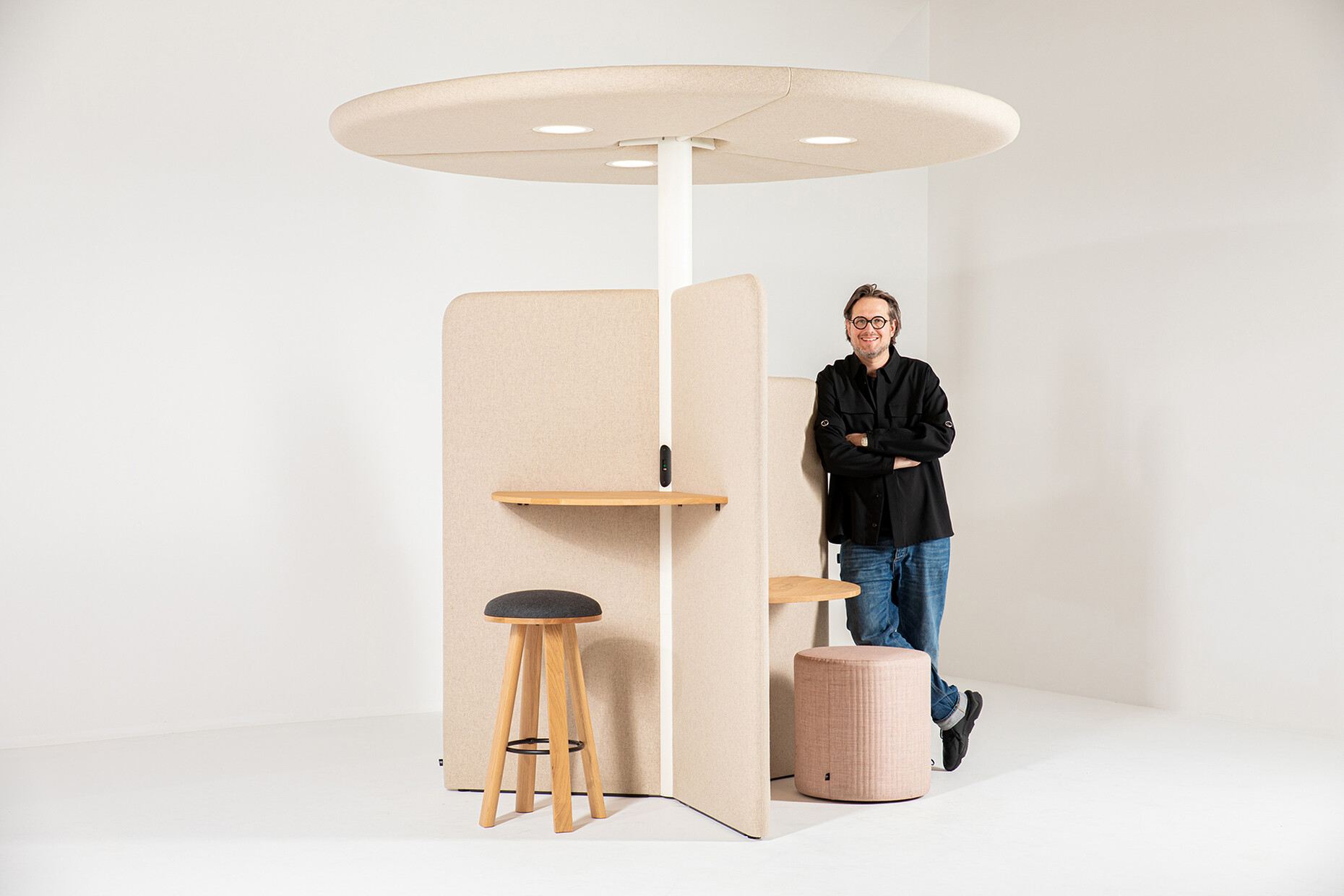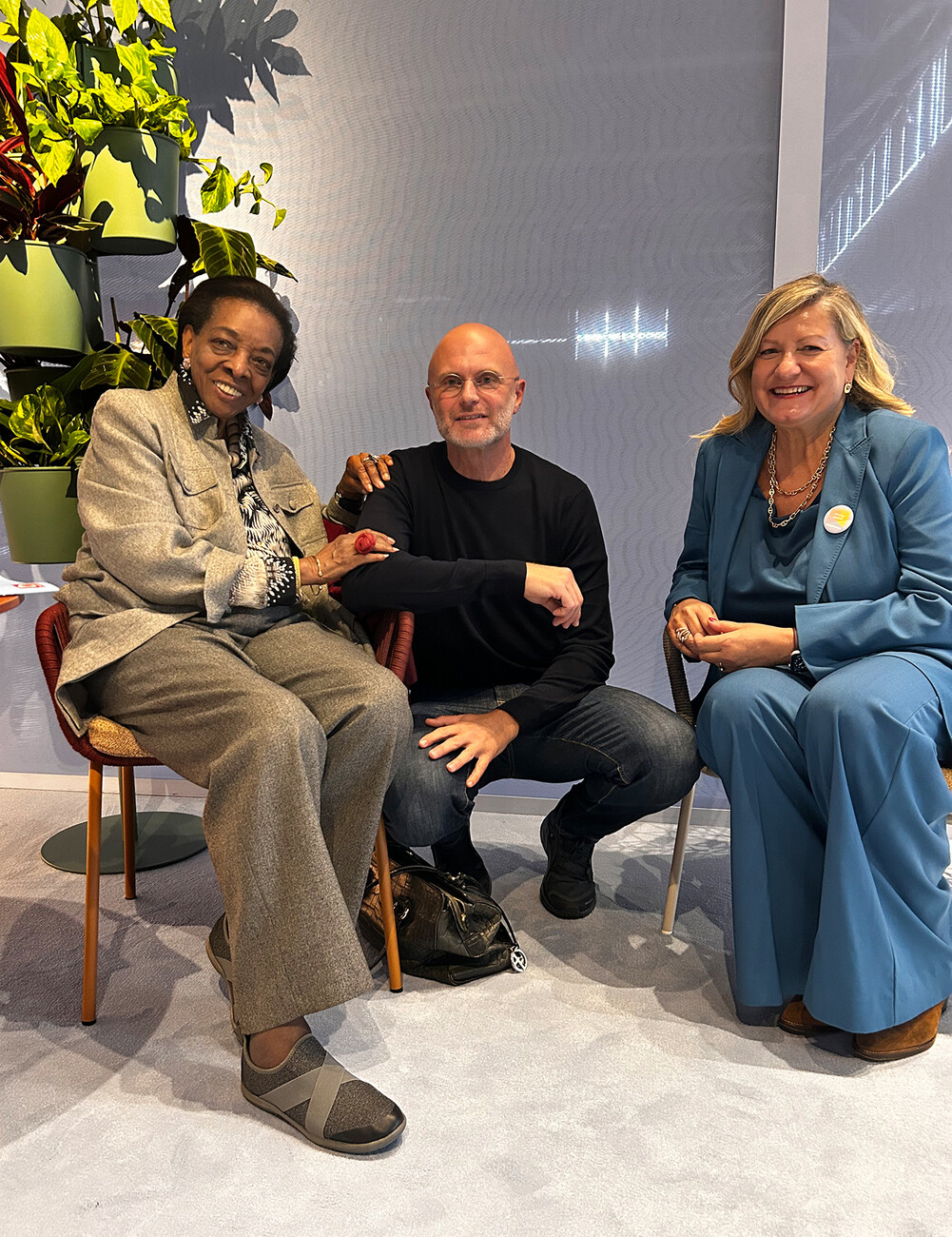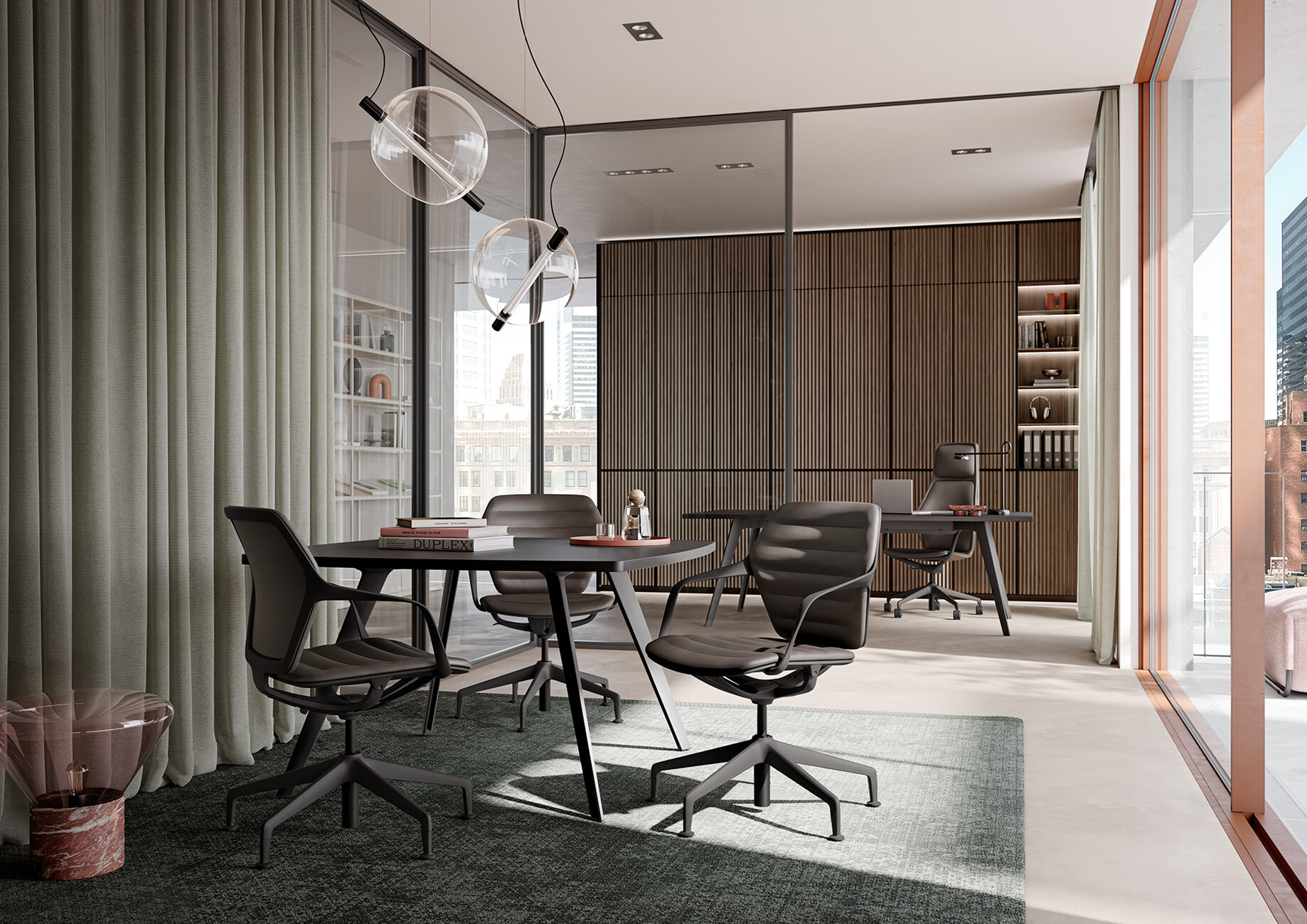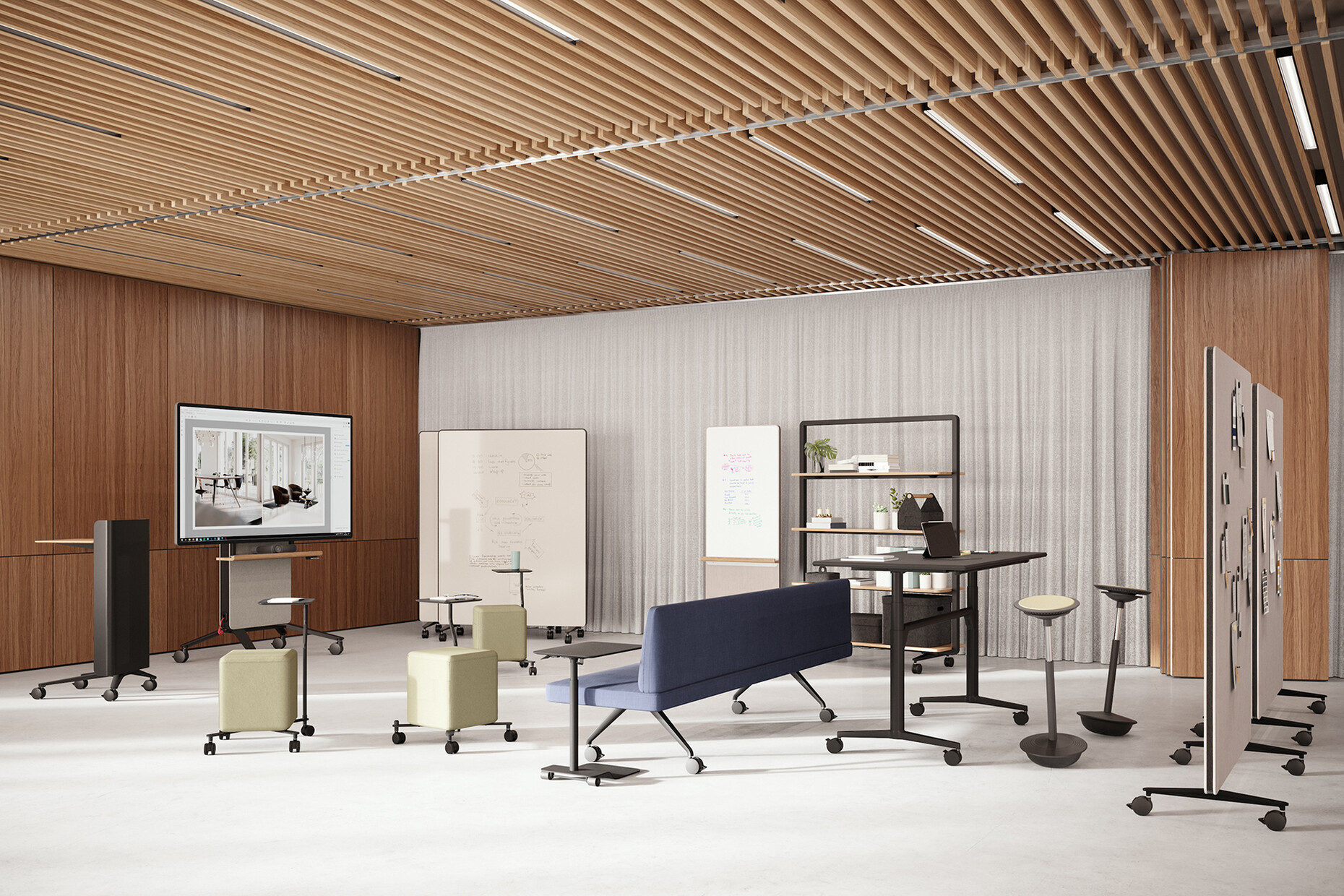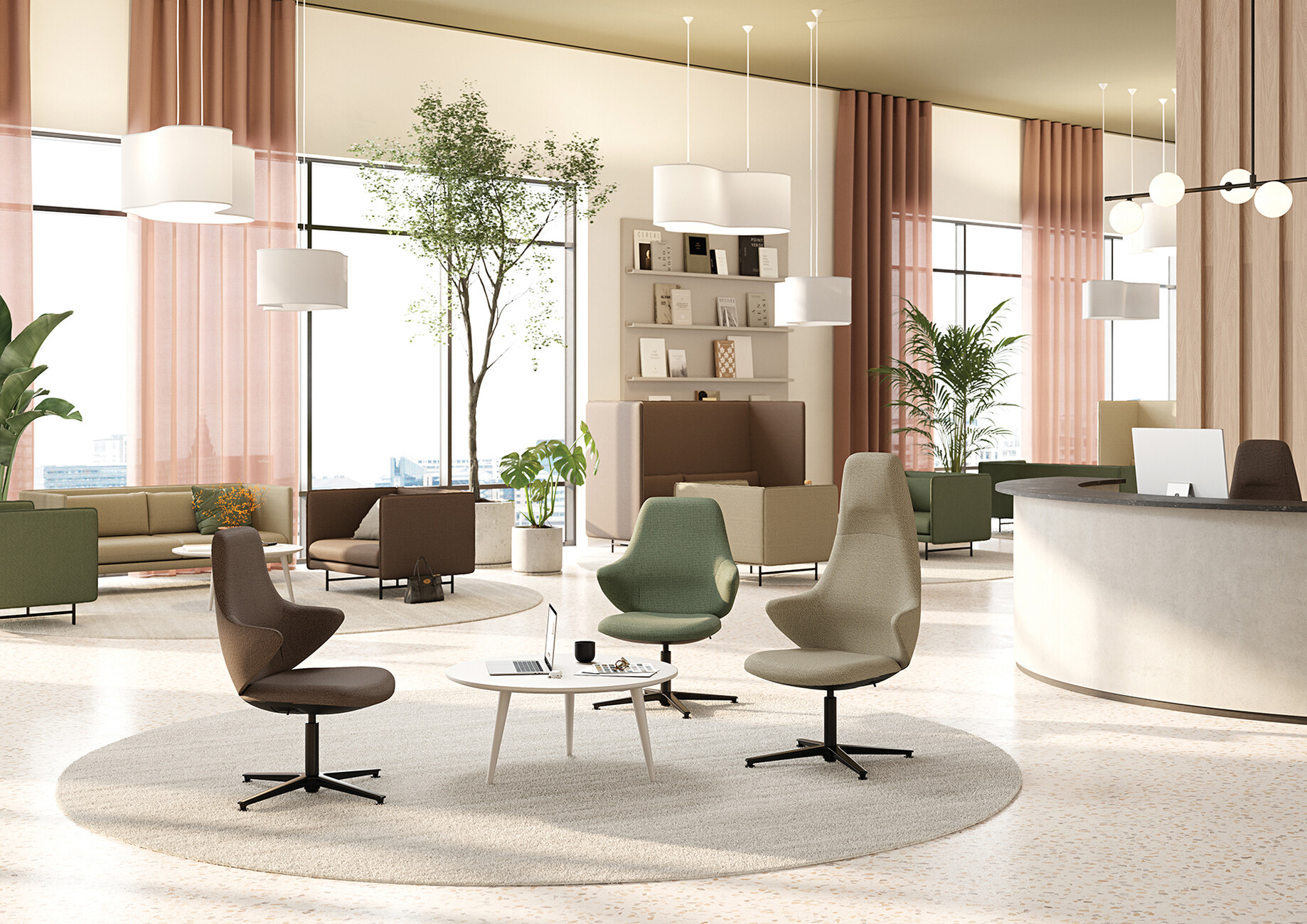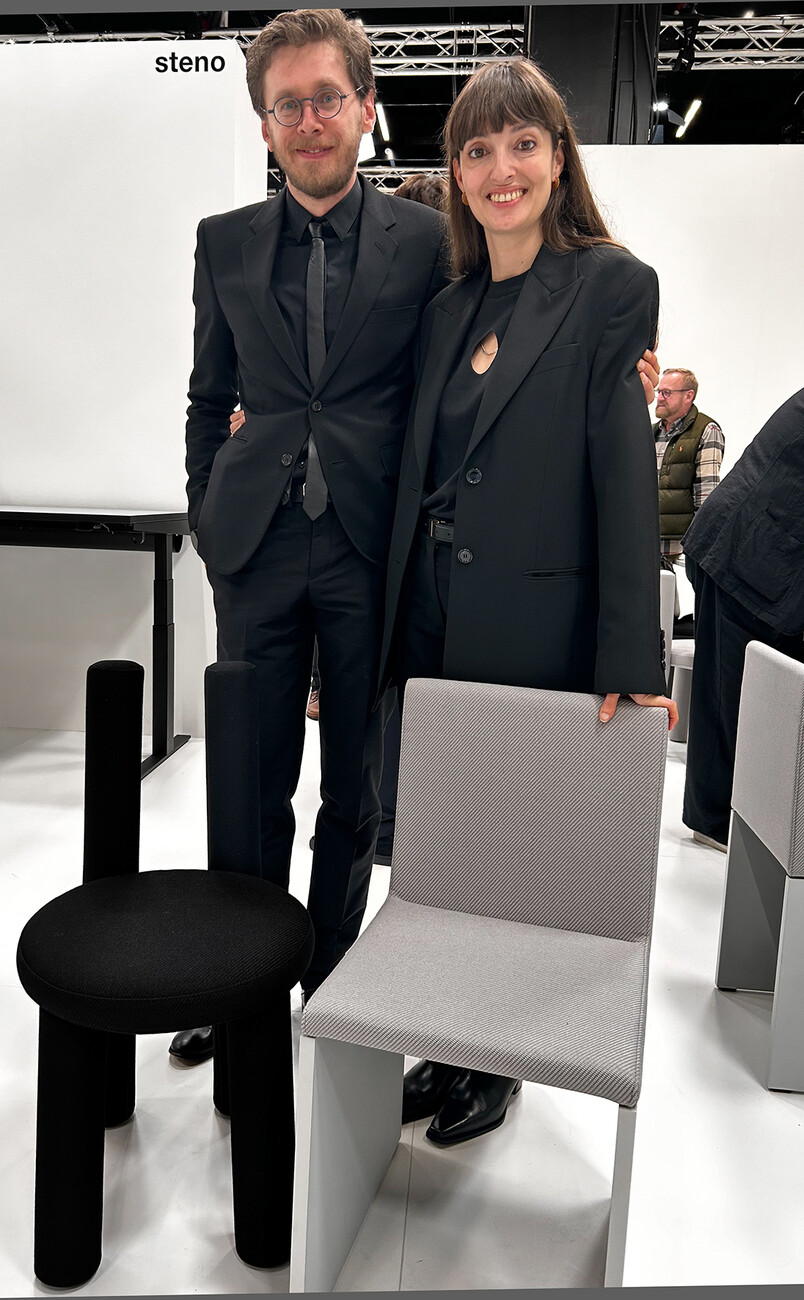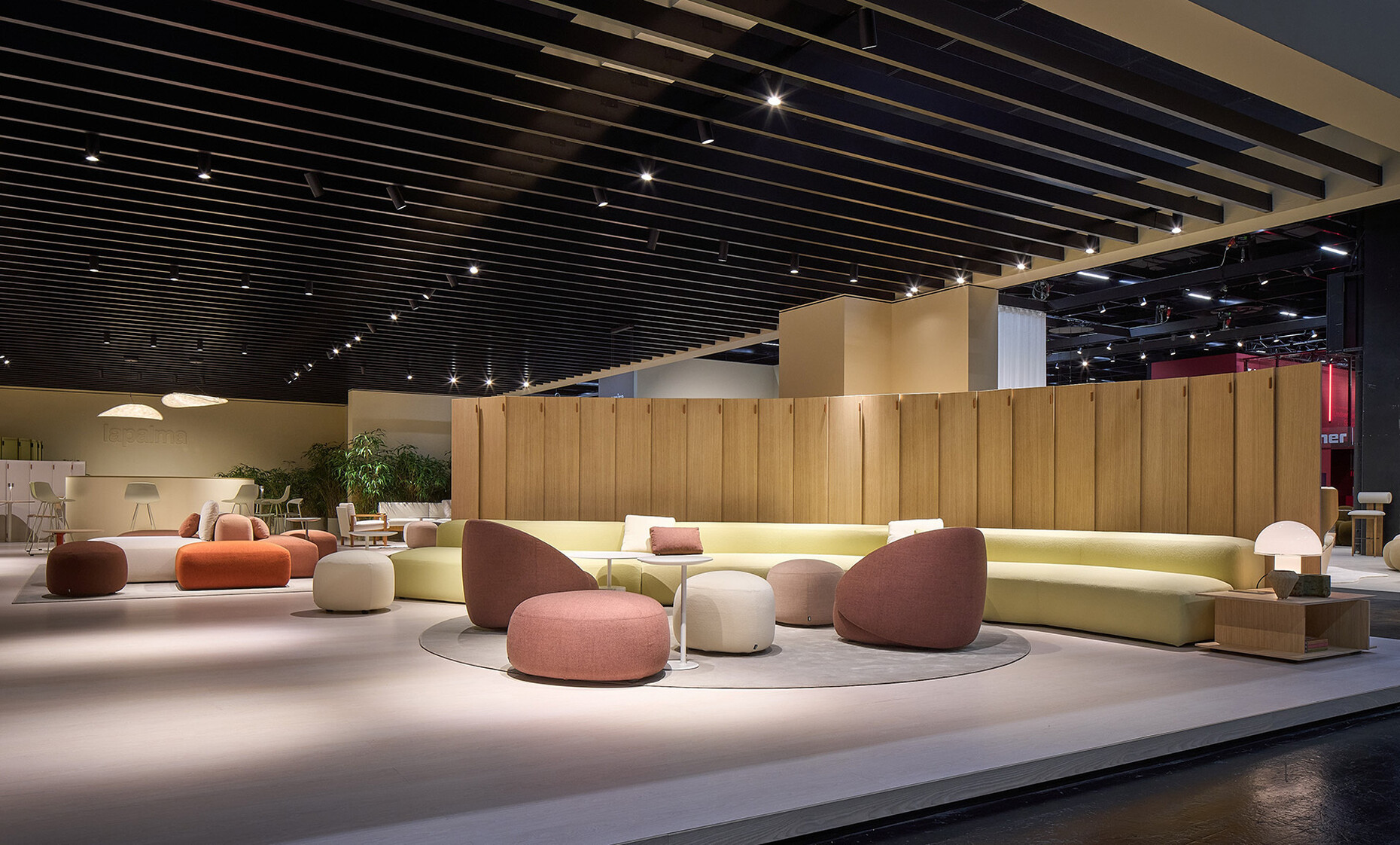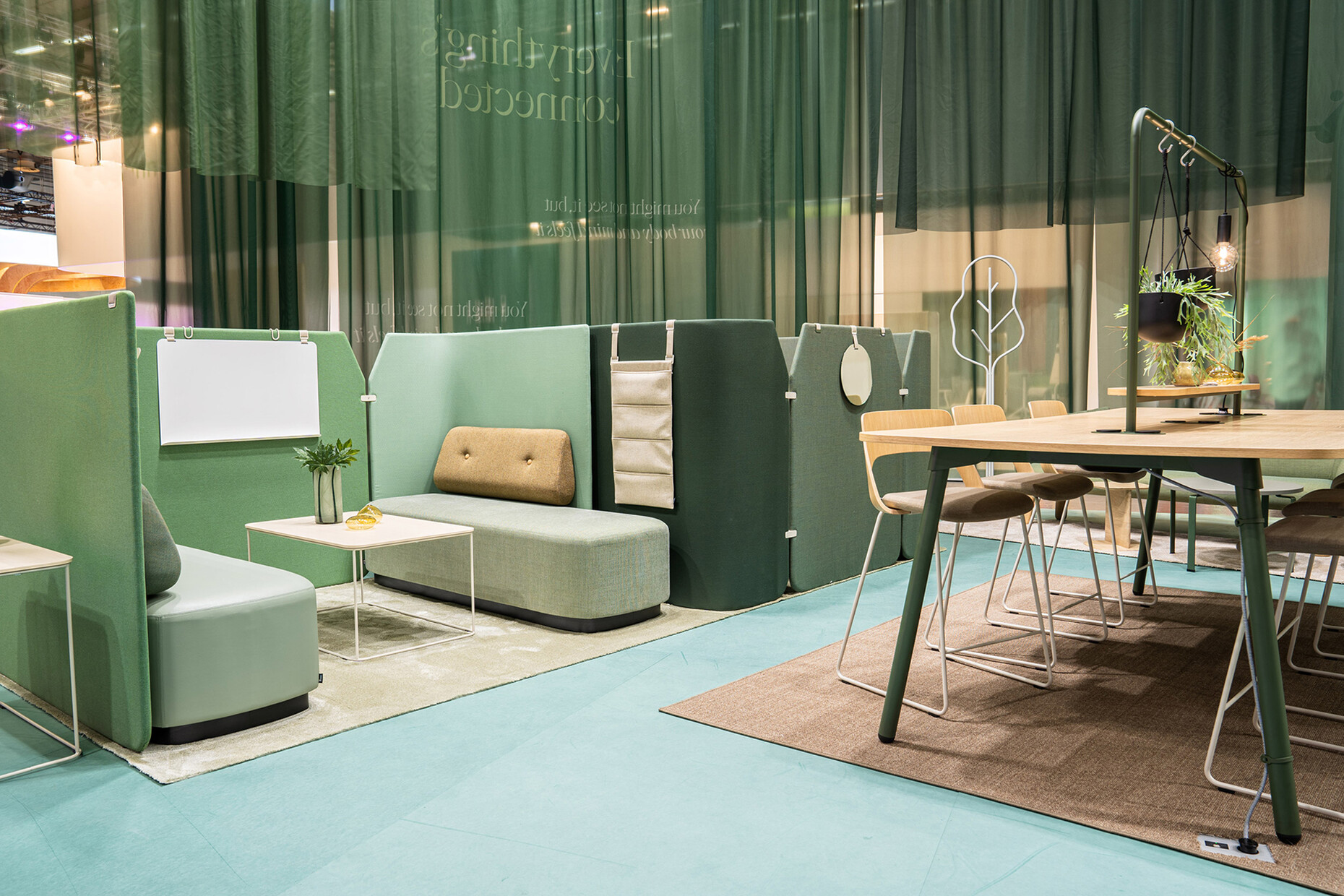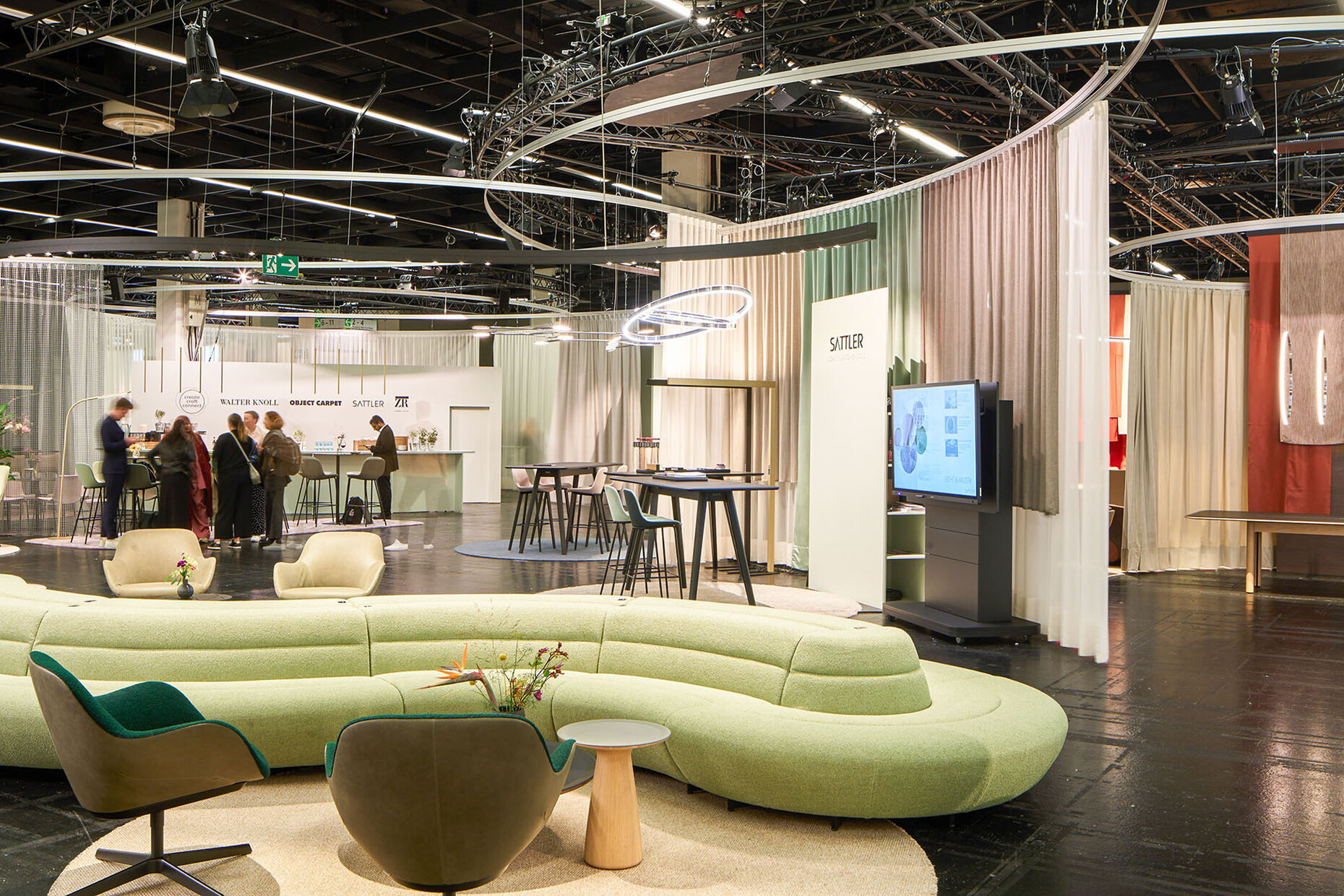ORGATEC 2024 – REVIEW
Nervously in the flow
Walking through the halls of Koelnmesse, you could tell: Whatever is to come, the furniture industry is prepared. With modular structures and flexible elements, customised solutions and holistic approaches. At the desk and on armchairs, we sit protected behind high backrests and partitions, upholstered, of course. On the floor-level sofas, which meander through the room as required, we choose from a wide range of cushions that feature asymmetrical shapes instead of classic squares. We contrast the growing uncertainty with strong, natural colours that appear warm and familiar with a large dose of optimism that stability is not yet lost – as with Lindner, ege & Ambright, Prostoria, Arper or COR. A touch of violet and light lilac was added to this original choice of colour, which could indicate a desire for spiritual foresight and healing, if you believe the esotericism here. The homely office dominated the presentations, technical details are now preferably hidden away or designed as discreet jewellery, such as the minimalist ‘System 25’ by ZETR in cooperation with e15. The former gimmicks for open spaces of recent years have gained in elegance in parallel – movement yes, after all, studies show that both long periods of sitting and standing are unhealthy, but then please do it with style.
These ideas were presented to us in unusually airy spaces, which, on the one hand, pointed to the reduced number of major exhibitors and, hopefully, the final move away from elaborate and wasteful stand architecture. Instead, in addition to wooden structures and fine metal chains, transparent fabric was increasingly used as a ceiling structure and impressive installation - as at NowyStyl. Without further ado, Palmberg set the light textile in motion with a blower, creating a dynamic room divider. Meanwhile, ‘Kein Messestand’ (‘No exhibition stand’) was plotted on the wall by the company Form to present its ‘UF Collection’ and, with its ‘No Campaign’, called for a radical rethink in the design of working environments for multifunctional solutions.
The only true solution for all requirements is needed, because now it's all about the big picture. Progress requires holistic ergonomics in which light and acoustics, space and furniture form a coherent unit. At Pedrali, for example, Robin Rizzini combined lightweight structures with high stability in the ‘Rizz Workstation’. The table can be equipped with a bridge structure including lighting, storage and planters, a cable management system and sound-absorbing surfaces. With ‘Everything is connected’ as its motto, Kinnarps emphasised that ergonomics in the office is characterised by the entire physical and social environment and is not just defined by individual pieces of furniture. We should feel comfortable in this new world of work, because people are at the centre of it. And in addition to isolation at their desk at home, people need to socialise as part of a team. The programme of the Wherever Whenever – Work Culture Festival and the neighbouring Design Post therefore offered numerous platforms for discussing the status quo and the approach to transformation. In addition to the exhibitions, Midgard Licht organised an open talk at the MAKK entitled ‘Designing the Future: Crisis or Opportunity for Change?’, in which journalist Jasmin Jouhar discussed with designers Stefan Diez and Sebastian Herkner, architects Anabelle von Reutern and Chris Middleton and scientific futurologist Doris Sibum.
The few remaining office furniture manufacturers, who continued to try to shine in this free programme with conservative structures and large product battles, appeared to have fallen out of time. And people quickly got tired of the same trendy shapes. The companies that dared to look outside the box stood out all the more: like gumpo. Its creative directors Ana Relvão and Gerhardt Kellermann effortlessly create a unique signature in pure design. ‘yay’ and “ohh” are the names of their two new pieces of seating furniture, which are very different but still harmonise: A clear statement with a Victory sign on the one hand, a restrained gesture that surprises at second glance with great versatility on the other. Thanks to the creative jack-of-all-trades Peter Wagner, Wagner Living always knows how to surprise even in challenging times, from the extended Airstream caravan in front of the Design Post to clever further developments such as the ‘D2’ modular system by Gonzalez Haase AAS & Diez Office. The parametric room system made of commercially available aluminium or cardboard lightweight panels enables robust structures without screws or glue. The production and assembly of the customised furniture is carried out by local craftsmen. The ‘D1 Office Pro’ swivel chair by Stefan Diez with Dondola® 4D seat joint, which actively supports posture and prevents tension, is also particularly suitable for long periods of sitting. And the table lamps from Heavn, which simulate the natural course of the sun, provide the right light in the workplace.
It is still an open-ended process, the highly discussed change in the world of work, which is sought somewhere between the imposed office days and the freedom of the home office. Change hovers over our present as both a threat and a promise, and this is also reflected in the range of products on offer at a trade fair for office and contract equipment and furnishings. While the imagination was supported here and there with VR glasses, as at Interstuhl, there was no major advertising for artificial intelligence. Instead, the focus was on craftsmanship, for which visitors were able to explore their own skills in workshops. Koelnmesse responded to the call for circularity and the careful use of resources with the ‘Circular House’ networking platform and the ‘Blind Date’ concept: 20 European design brands were invited to submit anonymised briefings on the topic of ‘reduction’. Each of these tasks was assigned by drawing lots to designers whose identity also remained hidden until the start of the trade fair.
So what is the outcome of this year's Orgatec? A mixed feeling about the state of the industry, also with regard to the recently cancelled international furniture and furnishings trade fair imm cologne 2025, whose future is now shrouded in fog. Relevant brands have turned their backs, and it is still questionable whether imm cologne and Orgatec will be able to merge in the future. After holding on to the once tried-and-tested concepts for far too long, there is now a palpable sense of helplessness. The laurels of the past are no longer enough to shape the future, and Cologne as a trade fair location is not alone in this. The importance of Germany for the presentation of new products and the industry's network meeting is currently dwindling and the competition is therefore becoming incomplete. At the same time, it quickly became clear to exhibitors in discussions with representatives that behind the glittering presentations and the relaxed, good-humour strategy, many companies are experiencing tangible existential fears that are leading them to think more than carefully about every investment in a potential risk. This leads to homogeneous design, which makes the German inventive spirit that has been so praised for decades pale in comparison. The construction crisis and resource conflicts have had a severe impact on the furniture industry, which has already been hit hard by the pandemic, and the subsequent chain reaction is becoming increasingly visible.
Cologne also showed that the effects of this are multifaceted: Design Post is benefiting from the weakness of Koelnmesse, gaining new exhibitors this year, such as Brokis, and those who once turned away (such as Moroso) are now endeavouring to find space again in the historic Dreigelenkbogenhalle. The proximity to the exhibition halls has always been an advantage for the Design Post, so it will be exciting to see in which direction the concept will now develop following the cancellation of the imm cologne. Parallel to the trade fair, the constant exhibition areas there were well attended, the mood was professional and the atmosphere hospitable. The potential to establish itself in this vacuum as an independent, interdisciplinary platform for the design industry is there.
By contrast, the atmosphere at Orgatec has become more informal: thanks to the half-empty exhibition halls, even setting up a paddle tennis court was an option. While guests in the focus areas sometimes got lost in the wide aisles, the much requested event offerings with catering, talks and live music were often located very close to the exhibitions. When trying to chat there, the powerful beats from across the way encouraged guests to shake their hips instead. The approach of responding to a crisis with as large and colourful an offer as possible is not the right one if it counteracts the original purpose of the trade fair, one might now think. But perhaps there is also an opportunity in this change of course. Transformation requires experimentation, and this year's Orgatec can be seen as such. As Herbert Grönemayer already sang in 1998: "Stagnation is death, go ahead, everything remains different".
Orgatec
22 to 25 October 2024
9 a.m. to 6 p.m.
